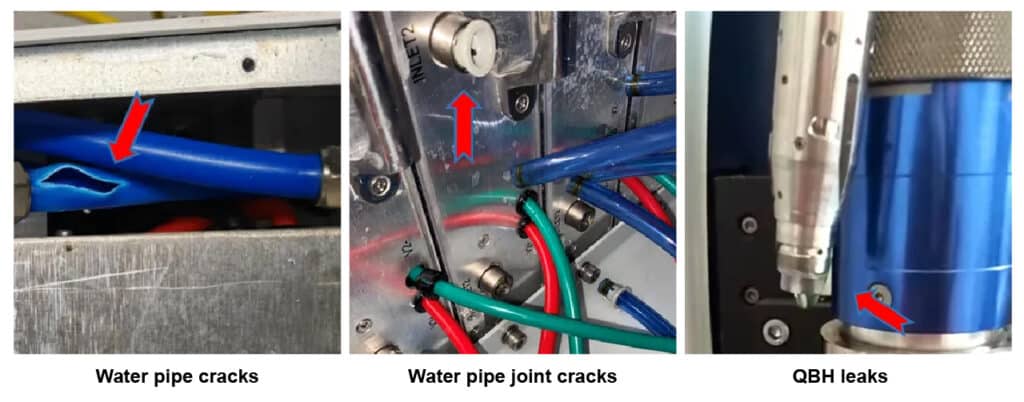Lasers, when operating in low-temperature environments, face the risk of freezing, which can cause performance issues and equipment damage. The following are some of the damages caused by the failure to implement timely anti-freeze measures for the laser.

Typically, damages to the laser caused by freezing are not covered under the laser’s warranty. Implementing appropriate antifreeze measures is crucial to ensure the laser operates effectively and its lifespan is prolonged.
Laser antifreeze common methods
1. Environmental Control
- Maintaining a Constant Temperature:Placing the laser in a controlled environment is an effective way to prevent freezing. Using temperature-controlled enclosures or heaters can keep the surrounding temperature within a safe range, thus protecting the laser from low-temperature impacts.
- Insulation: Wrapping the laser with insulating materials can effectively reduce heat loss and help maintain its internal temperature. Efficient insulation can prevent the external cold from directly affecting the laser.
2. Internal Heating
- Heaters: Installing heaters inside or outside the laser can ensure that critical components remain within the operating temperature range. Adjusting the heater’s power as needed can help maintain an optimal temperature.
- Thermal Circulation Systems: Some high-performance lasers are equipped with built-in thermal circulation systems that heat critical internal components to prevent freezing. This method is particularly suitable for lasers that require precise temperature control.
3. Using Antifreeze Solutions
- In liquid-cooled laser systems, ordinary coolant can freeze at low temperatures, causing the system to malfunction. Using antifreeze solutions prevents the coolant from freezing, ensuring the cooling system operates correctly.
Below chart is for reference only, the specific proportion is determined based on actual conditions. Please don’ t forget drain the antifreeze and use clean coolant water for circulation cleaning when the temperature stabilizes above 0℃.
| Proportion (Antifreeze: Water) | Operating environment temperature |
| 2:8 | -2~5℃ |
| 3:7 | -12~15℃ |
| 4:6 | -22~25℃ |
| 5:5 | -32~35℃ |
| 6:4 | -42~45℃ |
4. Automatic Detection and Control
- Temperature Sensors: Installing temperature sensors in and around the laser can provide real-time temperature monitoring. When the temperature approaches the freezing point, the system can automatically activate heating devices to prevent freezing.
- Automated Control Systems: Automated control systems can adjust the heating devices’ power based on real-time temperature data, ensuring the laser always operates within a suitable temperature range. This improves the efficiency and reliability of antifreeze measures.
5. Regular Maintenance
- Routine Inspections: Regularly inspecting the laser and its antifreeze system ensures that all equipment is functioning correctly. Conduct comprehensive checks and maintenance, especially before the onset of cold seasons, to identify and address potential issues.
- Testing Antifreeze Measures: Regularly testing antifreeze measures in low-temperature environments ensures that all systems and devices can operate under extreme conditions. By simulating extreme environments, potential problems can be identified and addressed in advance.
In conclusion, antifreeze measures for lasers are essential for their normal operation and longevity in low-temperature environments. By employing environmental control, internal heating, antifreeze solutions, automatic detection and control, and regular maintenance, freezing can be effectively prevented. These measures not only extend the lifespan of the laser but also enhance its operational efficiency and reliability.
